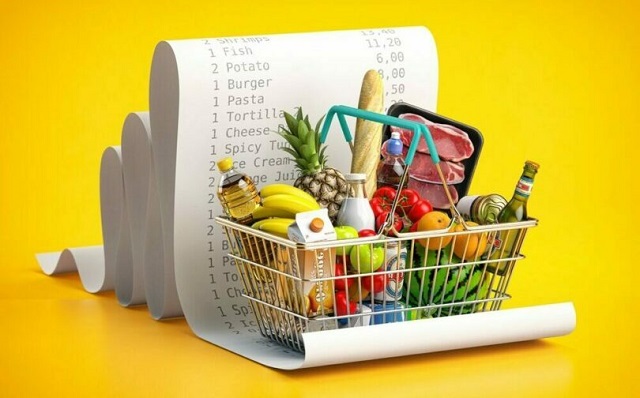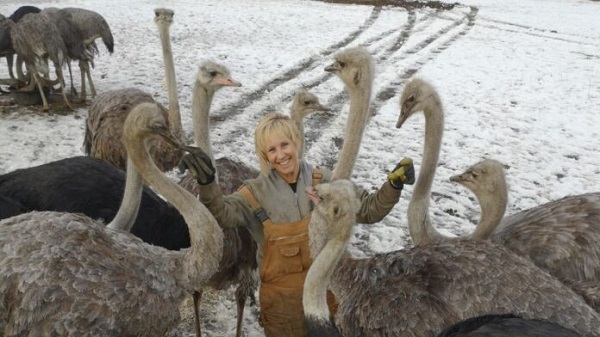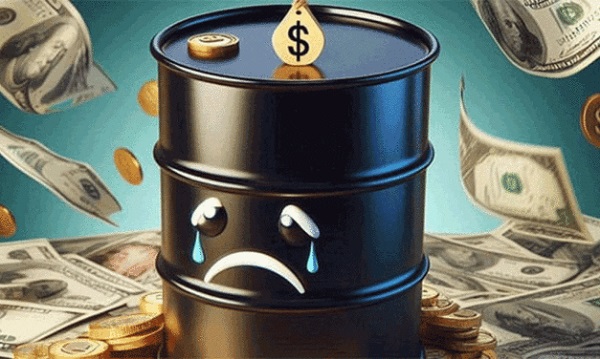Agriculture
DC-based think tank warns US gov’t failing to prioritize food security while China ramps up efforts

From LifeSiteNews
By J.M. Phelps
The Biden administration has incentivized many farmers to reprioritize the use of their land away from cultivating it for food production.
The United States government and the Chinese Communist Party see “national security” in two very different ways – and that includes food security.
Historically, the CCP has been known to weaponize its food supply, which it has done against millions of its own citizens, resulting in mass starvation and suffering. But today, it appears the communist government is stockpiling food, indeed, making it a major national security priority for its people. Why?
Tommy Waller, president and CEO of the Washington, D.C.-based think tank the Center for Security Policy, says most Americans do not understand that “food security is national security”. And that currently, the safety of American citizens is, indeed, being jeopardized by the U.S. government. The retired Marine Corps lieutenant colonel, in an interview with WND, explained that “at the federal level, our nation has catastrophically failed to prioritize food security while all of our adversaries, both hostile nations and globalists, have had their crosshairs on food for quite a while.”
For example, Waller said, in stark contrast to “having no problem starving its own people,” the Chinese government has an entire agency called the National Food and Strategic Reserves Administration. It is largely responsible for laws and regulations that oversee grain and material reserves of the East Asian country.
In statistics often touted by members of the Chinese regime, Waller said, “China’s grain inventories are so abundant that the stock-to-use ratio is well above the international grain security threshold.”
“The U. S. government has not put a major priority on food security or preparedness,” Waller warned. In contrast to the Chinese regime’s prioritizing strategic reserves of food, he told WND, “under the Biden administration, the USDA and FEMA have transitioned from a culture of preparedness to priorities of diversity, equity and inclusion – DEI – and climate change.”
What’s more, he said, the Biden administration has incentivized many farmers to reprioritize the use of their land away from cultivating it for food production. Through the Conservation Reserve Program, he explained, “farmers are getting paid more to get their land into the program as opposed to farming it.” While he conceded there are some benefits to the program, he also pointed out that farmers are producing less food as a result, and this diminishes America’s food security.
“Less than two percent of our population produces food for everybody else in this country,” Waller noted. “The average American isn’t prepared to go without food for any duration, so you can see the importance of keeping our farmers farming.”
“Take away farming and you take away food,” he said starkly, while warning that the average person is extremely unprepared for shortages of food. “They just take it for granted, and it’s understandable because we’ve always had it very easy in this country,” Waller said, but warning about one scenario in which Americans could find themselves hungry right away: “That number one scenario is a loss of electricity caused by widespread electric grid blackouts.”
Waller’s interest in food security, he said, steadily grew due to his work to secure America’s electric grid. “All of the infrastructure we have is dependent upon electricity,” he said. “When considering the second and third order effects of electric grid outages, you can see how food becomes a very significant item of importance.”
“Most Americans don’t think twice about paying for home insurance, automobile insurance, life insurance, but for whatever reason, they don’t think about food insurance,” Waller told WND. “They don’t think about stocking up.”
While the federal government may be failing to stress the importance of preparedness, Waller attests that food security “is the one area where individual people and their communities could actually enhance national security,” adding that the lack of preparedness is “a fixable problem, if we are smart about our policies and more.”
In a 41-page report, the Center for Security Policy has published recommendations to bolster food security at the federal, state, local and individual level. With little action at the federal level, he said, it is important for Americans to do what they can at the state and local, as well as individual levels.
For example, the Center, which has a 20-year track record of helping state governments shape policies to bolster national security, is actively supporting numerous lawmakers seeking to outlaw agricultural land from being owned by foreign adversaries. The security-oriented nonprofit also promotes the concept of community-supported agriculture and the importance of citizens purchasing their food from local farmers. “By helping sustain their work,” Waller told WND, “it’s going to create more resilience at the community level.”
“Everything the Center for Security Policy does is for the public interest,” Waller said. “We exist to provide uncompromised analysis, unflinching leadership and unconventional solutions to keep Americans safer,” he explained, adding that “there are no corporations behind what we are doing.” He shared that CSP can also “provide threat briefings at the county level for emergency managers and law enforcement”.
Ultimately, as Waller explained, “food security is national security, and everyone – from citizens to lawmakers – can do their part to increase both.”
Reprinted with permission from WND News Center.
Agriculture
Canada Greenlights Mass Culling of 400 Research Ostriches Despite Full Recovery from Bird Flu Months Ago

 Nicolas Hulscher, MPH
Nicolas Hulscher, MPH
Federal court upholds CFIA’s reckless cull order—setting a dangerous precedent for the unscientific mass depopulation of genetically important animals.
In March, I interviewed Katie Pasitney of Universal Ostrich and Connie Shields to discuss the alarming implications of the Canadian Food Inspection Agency (CFIA) order to cull 400 research ostriches at Universal Ostrich Farm in British Columbia over bird flu:
Canada Orders Mass Culling of 400 Research Ostriches Over Bird Flu, Refuses to Test Surviving Birds for Natural Immunity
·The Canadian Food Inspection Agency (CFIA) has ordered the culling of 400 ostriches at Universal Ostrich Farm in British Columbia, citing concerns over H5N1 bird flu. However, this decision is not based on sound science and could have serious consequences for both food security and medical research.
Universal Ostrich Farm is a research facility focused on studying the unique antibody-producing capabilities of ostriches. Their research has demonstrated potential in neutralizing viruses, bacteria, and even COVID-19, making it an important contribution to medical science.
In December 2024, the CFIA claimed that two deceased ostriches—which had been lying outside for over 16 hours—tested positive for H5N1 via PCR testing. Just 41 minutes after receiving these results, the CFIA signed an order to cull the entire flock.
The CFIA initially granted the farm an exemption, recognizing the birds as “genetically important.” Later, without clear justification, they reversed this decision, ordering their destruction.
Despite the importance of this research, the CFIA has refused to conduct further testing on the birds and has banned the farm from conducting its own tests, under threat of heavy fines and possible imprisonment. Why is the Canadian government refusing to study the potential antibodies ostriches have developed against H5N1 bird flu?
On January 31, 2025, a court granted a temporary stay of execution, halting the cull. However, the CFIA is appealing this decision, which means the culling could still proceed.
Today, we have received news that the reckless mass cull order will proceed despite their ostriches having already recovered months ago and developed natural immunity against H5N1:

Official Announcement: Federal Court Decision in Universal Ostrich Farms Inc. v. Canadian Food Inspection Agency
Dear friends and supporters,
We are absolutely devastated to share today’s Federal Court decision, issued on May 13, 2025. The court ruled in favour of the Canadian Food Inspection Agency (CFIA), upholding their order to destroy our beloved ostriches and rejecting our plea to save them.
The court’s decision accepted the CFIA’s justification under the Health of Animals Act and their use of the Stamping-Out Policy, which mandates the destruction of animals to control disease outbreaks, regardless of their health status. The court confirmed the CFIA’s approach, prioritizing trade obligations over the welfare of our animals.
In addition, we’ve been ordered to pay $15,000 in CFIA’s legal costs. You can read the full decision here: (2025 FC 878). https://saveourostriches.com/wp-content/uploads/2025/05/JR-T-294-25-and-T-432-25-Final.pdf
We are heartbroken by this outcome and uncertain about the future of our farm. As we navigate this incredibly difficult time, we ask for your patience and continued support. If you are able, please consider making a donation to help us manage the financial and emotional toll this has taken.
Thank you,
Universal Ostrich Farm
http://SaveOurOstriches.com
This deeply misguided decision sets a dangerous precedent for the Canadian government to recklessly depopulate animals at will.
By upholding the CFIA’s reckless cull order, despite the ostriches’ recovery and natural immunity, the court has prioritized trade protocols over scientific inquiry, animal welfare, and the advancement of life-saving medical research.
Epidemiologist and Foundation Administrator, McCullough Foundation
www.mcculloughfnd.org
Please consider following both the McCullough Foundation and my personal account on X (formerly Twitter) for further content.
Agriculture
Canada is missing out on the global milk boom

This article supplied by Troy Media.
 By Sylvain Charlebois
By Sylvain Charlebois
With world demand soaring, Canada’s dairy system keeps milk producers locked out of growth, and consumers stuck with high prices
Prime Minister Mark Carney is no Justin Trudeau. While the team around him may be familiar, the tone has clearly shifted. His first week in office signalled a more data-driven, technocratic approach, grounded in pragmatism rather than ideology. That’s welcome news, especially for Canada’s agri-food sector, which has long been overlooked.
Historically, the Liberal party has governed with an urban-centric lens, often sidelining agriculture. That must change. Carney’s pledge to eliminate all interprovincial trade barriers by July 1 was encouraging but whether this includes long-standing obstacles in the agri-food sector remains to be seen. Supply-managed sectors, particularly dairy, remain heavily protected by a tangle of provincially administered quotas (part of Canada’s supply management system, which controls prices and limits production through quotas and tariffs to protect domestic producers). These measures stifle innovation, limit flexibility and distort national productivity.
Consider dairy. Quebec produces nearly 40 per cent of Canada’s milk, despite accounting for just over 20 per cent of the population. This regional imbalance undermines one of supply management’s original promises: preserving dairy farms across the country. Yet protectionism hasn’t preserved diversity—it has accelerated consolidation.
In reality, the number of dairy farms continues to decline, with roughly 90 per cent now concentrated in just a few provinces. On our current path, Canada is projected to lose nearly half of its remaining dairy farms by 2030. Consolidation disproportionately benefits Quebec and Ontario at the expense of smaller producers in the Prairies and Atlantic Canada.
Carney must put dairy reform back on the table, regardless of campaign promises. The sector represents just one per cent of Canada’s GDP, yet
wields outsized influence on policy, benefiting fewer than 9,000 farms out of more than 175,000 nationwide. This is not sustainable. Many Canadian producers are eager to grow, trade and compete globally but are held back by a system designed to insulate rather than enable.
It’s also time to decouple dairy from poultry and eggs. Though also supply managed, those sectors operate with far more vertical integration and
competitiveness. Industrial milk prices in Canada are nearly double those in the United States, undermining both our domestic processors and consumer affordability. These high prices don’t just affect farmers—they directly impact Canadian consumers, who pay more for milk, cheese and other dairy products than many of their international counterparts.
The upcoming renegotiation of CUSMA—the Canada-United States-Mexico Agreement, which replaced NAFTA—is a chance to reset. Rather than resist change, the dairy sector should seize the opportunity to modernize. This includes exploring a more open quota system for export markets. Reforms could also involve a complete overhaul of the Canadian Dairy Commission to increase transparency around pricing. Canadians deserve to know how much milk is wasted each year—estimated at up to a billion litres—and whether a strategic reserve for powdered milk, much like our existing butter reserve, would better serve national food security.
Global milk demand is rising. According to The Dairy News, the world could face a shortage of 30 million tonnes by 2030, three times Canada’s current annual production. Yet under current policy, Canada is not positioned to contribute meaningfully to meeting that demand. The domestic focus on protecting margins and internal price fairness is blinding the sector to broader market realities.
We’ve been here before. The last time CUSMA was renegotiated, Canada offered modest concessions to foreign competitors and then overcompensated its dairy sector for hypothetical losses. This created an overcapitalized industry, inflated farmland prices and diverted attention from more pressing trade and diplomacy challenges, particularly with India and China. This time must be different: structural reform—not compensation—should be the goal.
If Carney is serious about rebooting the Canadian economy, agri-food must be part of the conversation. But that also means the agriculture sector must engage. Industry voices across the country need to call on dairy to evolve, embrace change and step into the 21st century.
Dr. Sylvain Charlebois is a Canadian professor and researcher in food distribution and policy. He is senior director of the Agri-Food Analytics Lab at Dalhousie University and co-host of The Food Professor Podcast. He is frequently cited in the media for his insights on food prices, agricultural trends, and the global food supply chain.
Troy Media empowers Canadian community news outlets by providing independent, insightful analysis and commentary. Our mission is to support local media in helping Canadians stay informed and engaged by delivering reliable content that strengthens community connections and deepens understanding across the country.
-

 Health1 day ago
Health1 day agoLast day and last chance to win this dream home! Support the 2025 Red Deer Hospital Lottery before midnight!
-

 Business2 days ago
Business2 days agoCarney’s European pivot could quietly reshape Canada’s sovereignty
-

 Aristotle Foundation1 day ago
Aristotle Foundation1 day agoThe Canadian Medical Association’s inexplicable stance on pediatric gender medicine
-

 Alberta2 days ago
Alberta2 days agoAlberta’s grand bargain with Canada includes a new pipeline to Prince Rupert
-

 conflict1 day ago
conflict1 day ago“Evacuate”: Netanyahu Warns Tehran as Israel Expands Strikes on Iran’s Military Command
-

 Energy1 day ago
Energy1 day agoCould the G7 Summit in Alberta be a historic moment for Canadian energy?
-

 Bruce Dowbiggin1 day ago
Bruce Dowbiggin1 day agoWOKE NBA Stars Seems Natural For CDN Advertisers. Why Won’t They Bite?
-

 Crime1 day ago
Crime1 day agoMinnesota shooter arrested after 48-hour manhunt






